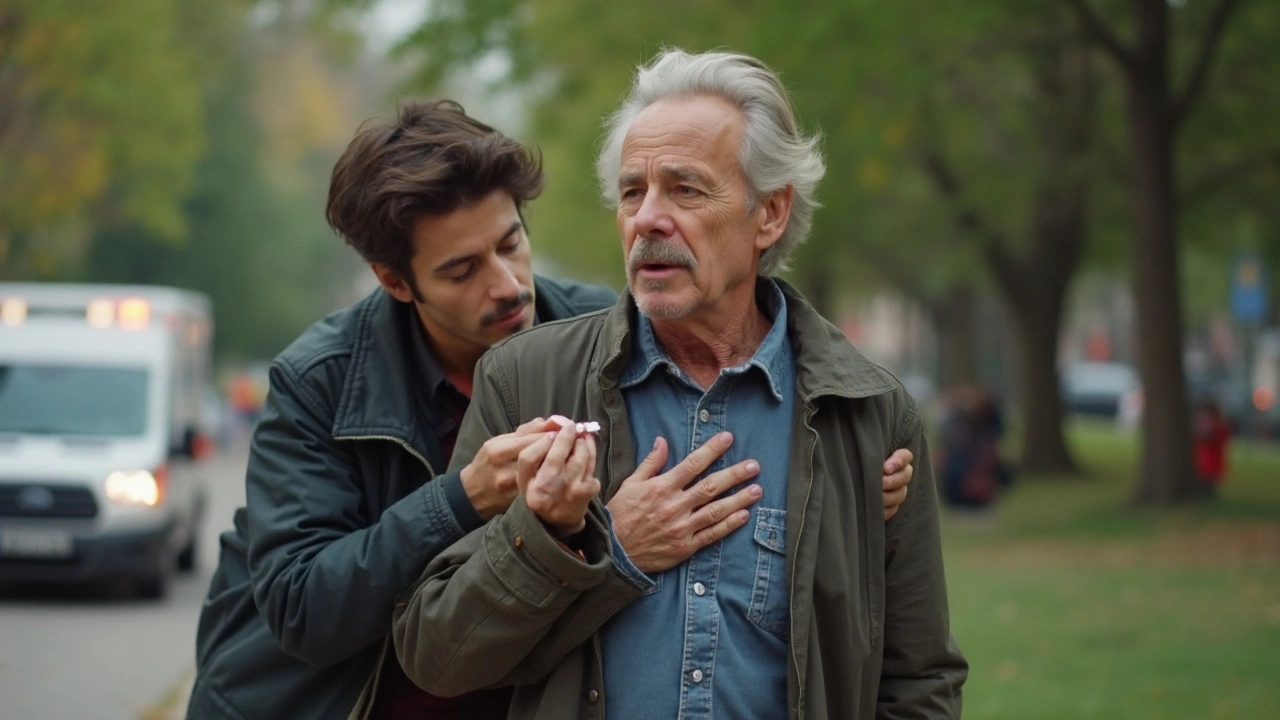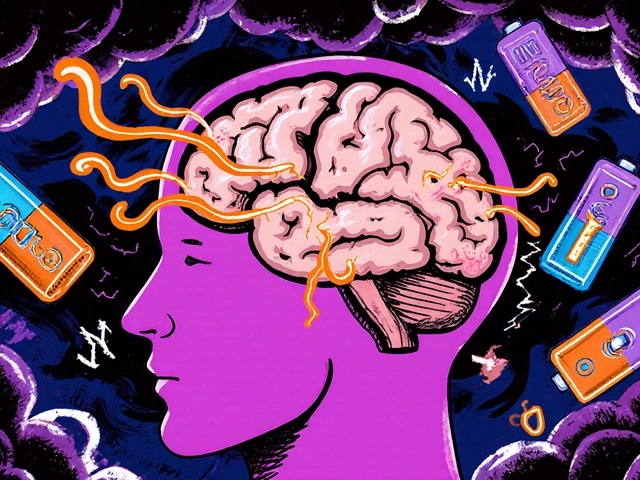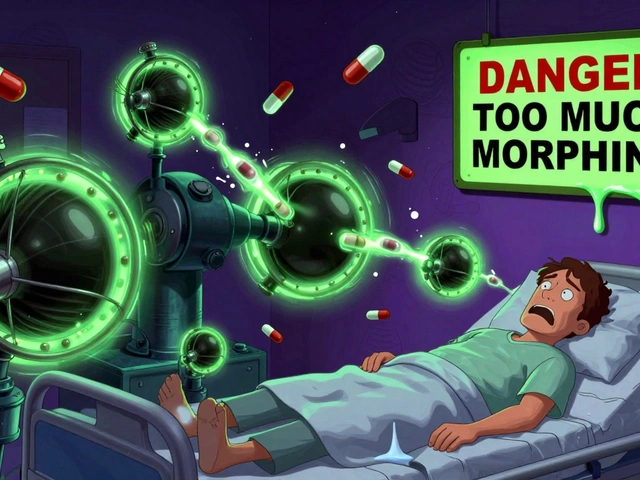Imagine sitting at your kitchen table, sipping tea, when suddenly a crushing pain grips your chest. The fear is real, and in that moment time crawls. For people living with heart disease, this scene plays out far too often, and when it happens, acting quickly can literally tip the balance between life and death. The hero in many of these stories? A tiny but mighty pill—nitroglycerin sublingual tablets. This medicine, no bigger than a pencil eraser, has been saving lives for generations, turning moments of panic into moments of relief.
How Nitroglycerin Works in the Body
So, what’s actually happening when chest pain hits? Most commonly, it’s angina—a warning sign that the heart isn’t getting enough oxygen-rich blood. When a person places a nitroglycerin tablet under their tongue (that’s the “sublingual” part), it dissolves and rapidly enters the bloodstream. Here, nitroglycerin works by relaxing and opening up blood vessels, making it easier for blood to flow to the heart muscle. The speed is mind-blowing: many people feel relief in just 1–5 minutes.
In biology class, you might have learned that nitroglycerin is related to dynamite. Sounds wild, right? Doctors realized that the same chemical that explodes in a quarry could, in tiny doses, unclog a traffic jam in your arteries. Nitroglycerin triggers the body to release a chemical called nitric oxide, which tells the muscle lining blood vessels to chill out and open up. Blood pressure drops slightly and suddenly the heart gets the oxygen it needs. As dramatic as it sounds, it’s all just basic chemistry at work.
It’s worth mentioning that the effect doesn’t last forever. Most sublingual nitroglycerin tablets give 20–30 minutes of relief, which is usually enough time for the pain to settle or help to arrive. According to NHS guidelines here in the UK, anyone with angina should always keep some tablets handy—at the pharmacy, these usually come in brown glass bottles because sunlight quickly breaks down nitroglycerin, making it less effective. Keeping the bottle tightly closed and away from heat is a must if you want the tablets to work when you need them most.
If you looked at a table of how fast emergency heart drugs work, nitroglycerin would always be at the top. Here’s how it compares to a few other common heart medications:
| Medication | Time to Onset of Relief | Route |
|---|---|---|
| Nitroglycerin (Sublingual) | 1–5 minutes | Under tongue |
| Aspirin (Chewable) | 5–15 minutes | By mouth |
| Oral Beta Blocker | 30–60 minutes | By mouth |
| ISDN (Isosorbide Dinitrate) | 5–15 minutes | By mouth (sublingual) |
If you notice, nitroglycerin’s speed is hard to beat. That’s exactly why doctors and paramedics count on it in a crisis.
Recognising When to Use Nitroglycerin
Chest pain can feel like a heavy weight, squeezing, pressure, or even burning in the chest. Sometimes it radiates into the jaw, neck, back, or even down the left arm. Most people with chronic angina learn to spot their own warning signs—maybe it happens after exercise, a large meal, stress, or suddenly in the night. But some folks feel chest pain out of the blue, even while resting. Bottom line: never ignore unexplained chest pain, especially if you’re over 40 or have known heart disease.
This is where nitroglycerin sublingual tablets come in as a trusted standby. Here’s the basic advice doctors give in the UK: as soon as chest pain starts, sit down, stay calm, and slip a tablet under your tongue. Don’t swallow it—let it dissolve naturally. Wait 5 minutes. If the pain hasn’t gone, you can take a second tablet. If still not relieved after another 5 minutes (so 10 minutes in total), pop a third tablet. If the pain hasn’t eased after three tablets in 15 minutes, it’s time to call 999. You could be facing a heart attack, not just a pesky angina episode. It’s pretty straightforward, but every second counts.
Sometimes, people try to tough it out, hoping the pain “will go away.” That delay can be dangerous. According to data from the British Heart Foundation, rapid action is directly linked to better outcomes if a heart attack is on the cards. Think of nitroglycerin as both a fire extinguisher and an alarm bell—you treat the immediate pain, but you also buy time for help, if needed. Don’t wait in fear; act.
People living in Bristol, and anywhere with cold, damp weather, should know that angina can strike during a brisk walk or even emotional stress. Energy bills and public transport woes can get the heart racing—sometimes literally! If you’re at risk for heart disease, talk to your GP about keeping nitroglycerin on hand, just in case.

Tips for Safe Use and Best Practices
Nitroglycerin gets the job done fast, but there’s a technique to using it right. First off, always check the expiry date. Old tablets won’t work as well—or may not work at all. The second you open that brown glass bottle for the first time, start a calendar reminder to replace it every 8 weeks or so, even if you haven’t used any. That’s because exposure to air and light speeds up nitroglycerin’s breakdown more than most medicines.
If you store your tablets in a car or in your trousers at the gym, rethink your storage; heat and sweat are nitroglycerin’s enemies. The bathroom isn’t ideal either. A high kitchen shelf, away from windows, is much better. Keep tablets in their original bottle, and don’t transfer to a pill organizer. Those handy plastic cases let air and moisture in, plus you’ll lose out on the warning system (since the nitroglycerin bottle is child-resistant and marked clearly).
Now, don’t be surprised if you feel a slight burning, tingling, or bitter taste under your tongue as the tablet dissolves. That means it’s working. Some folks get a mild headache or a flushed feeling in their face. It’s annoying, but it usually passes in 10–20 minutes. If you feel dizzy or faint after taking nitroglycerin, sit or lie down, and lift your feet if you can. That’s just your blood pressure dipping a bit from the widened vessels. Never take the tablet while standing—you don’t want to risk blacking out. Drinking alcohol at the same time? Bad idea. The combination can make you feel much more woozy.
A gigantic tip: don’t mix nitroglycerin with medicines used for erectile dysfunction (like sildenafil or tadalafil). This combo can create a dangerous drop in blood pressure—there are horror stories of people collapsing after trying both. If you’re prescribed both, keep your GP in the loop. There's no shame in asking about safe timing.
For folks with a latex allergy, you’ll be glad to know most brands of sublingual tablets are latex-free, but always double-check just in case. And if you can’t open the fiddly bottle in a rush, practice at home so muscle memory kicks in during a crisis. Don’t leave it until panic mode hits!
Side Effects and When to Seek Help
Earlier, I mentioned that nitroglycerin can cause headaches—and that’s by far the most common side effect. In fact, it used to be called the “Monday disease” among dynamite factory workers, who got severe headaches at the start of the week due to nitrate exposure. The good news? Headaches from sublingual tablets usually fade as your body gets used to the medicine, or within a few minutes.
You might feel a little lightheaded, especially if you get up too quickly after taking a dose. That’s the blood pressure lowering effect—nothing to panic about, unless you faint. Some people mention nausea or a fast heartbeat, but these are usually mild and pass quickly. If you find yourself getting a rash, swollen tongue or lips, or trouble breathing, ditch the tablet and seek emergency help. Allergic reactions are super rare, but not impossible.
Now, if you pop a tablet and the pain is gone but you still feel weak, groggy, or faint, keep yourself seated and hydrated. Call a friend or family member rather than going it alone for the next hour or so. If chest pain returns quickly after using nitroglycerin, it could be a sign your angina is getting worse or a warning of a heart attack. Call 999 if the pain is severe, lasts beyond 15 minutes, comes with sweating, nausea, or crushing pressure that won’t quit. Don’t try to tough it out.
One thing to watch: some folks build up a tolerance to nitroglycerin if they use it too often, so the effect can get weaker with time. Doctors sometimes recommend nitrate-free intervals (usually overnight) for people who use long-acting nitrates regularly. Think of it like charging your phone battery—the medicine works best when it hasn’t been used non-stop.

Why Nitroglycerin Remains a Lifesaver Worldwide
It’s easy to forget that nitroglycerin sublingual tablets have been on the scene since the late 1800s, and they’re still a frontline tool in emergency heart care more than a century later. They’re portable, affordable, and still the fastest way to open coronary arteries outside of a hospital. Doctors around the world prescribe tens of millions of doses each year.
If you look at first-aid kits in ambulances from London to Tokyo, you’ll spot nitroglycerin. In sports stadiums and airports, security staff carry it in case a visitor collapses with sudden chest pain. Many paramedics are trained to give a dose en route to hospital if someone reports classic heart attack symptoms—that’s how well-trusted it is.
Patients at risk for angina or a previous heart attack often say carrying nitroglycerin gives them confidence to go about their day. Instead of fearing every twinge, they know the drill: stop, sit, tablet under the tongue, wait, and call for help if needed. It’s not just about the drug; it’s about the sense of control it offers in a scary moment.
People often ask if there’s anything newer or better. The reality? No other medicine acts as quickly or is as easy to use for an emergency dose at home or on the street. Heart specialists pair nitroglycerin with lifestyle advice, statins, and sometimes procedures like stenting, but when seconds count, this trusty tablet is still first choice.
Here’s a snapshot of how widespread nitroglycerin’s use is in emergency cardiac care:
| Region | Monthly Nitroglycerin Prescriptions (2024) |
|---|---|
| United Kingdom | 195,000 |
| United States | 1,100,000 |
| India | 250,000 |
| Australia | 80,000 |
That’s not just a medical fad—it’s proof that when it comes to angina and heart attack warning signs, nitroglycerin tablets are here to stay. So, if your doctor ever prescribes this little emergency lifesaver, treat it with respect, carry it everywhere, and never hesitate to use it if you need to. The right action in the right moment can make all the difference.







Comments
Sondra Johnson
June 14, 2025 AT 03:15 AMNitroglycerin is wild - a tiny pill that’s basically dynamite’s chill cousin. I used to think it was sci-fi until my dad kept a bottle in his sock drawer like a secret weapon. Now I get why paramedics carry it like it’s holy water. That 1–5 minute window? That’s the difference between calling 999 and calling your mom to say you’re fine. It’s not magic. It’s chemistry. And it’s beautiful.
Also, the fact that it’s stored in brown glass? Genius. Like a vampire’s sunscreen. Sunlight kills it. Heat kills it. Poor storage kills it. I’ve seen people keep it in their car console. Bro. Just… no.
Chelsey Gonzales
June 15, 2025 AT 07:51 AMomg i had no idea nitro was related to dynamite 😱 i thought it was just some fancy heart pill. now i feel like i’m carrying a mini bomb in my purse. also why is it always in those gross brown bottles? like, can’t they make it look cute? maybe a little heart shape? i’d take it more seriously if it looked like a gemstone 💎
MaKayla Ryan
June 16, 2025 AT 22:55 PMOf course the Brits have it right. We in America are too busy chasing the next fad drug while our grandmas are dying because they didn’t know to sit down before popping the pill. You want to live? Listen to the NHS. They’ve been doing this since before your TikTok was a twinkle in your mom’s eye. And no, I don’t care if you’re vegan or woke - if your heart’s failing, nitroglycerin doesn’t care about your pronouns. It just works. Period.
Kelly Yanke Deltener
June 18, 2025 AT 20:34 PMI used to work in a pharmacy and saw people bring in their grandpa’s nitro bottle from 2007. Like, honey, that pill has seen more wars than your ex. I’d hand them a new one and say, ‘This one’s not gonna explode - but your heart might if you keep using that old one.’
And don’t even get me started on people who keep it in their gym bag. Sweat + heat = dead medicine. I swear, half the people I see are just one bad workout away from a cardiac emergency because they treated their lifesaver like a protein bar.
Kelly Library Nook
June 19, 2025 AT 20:09 PMIt is imperative to note that the pharmacokinetics of sublingual nitroglycerin are contingent upon mucosal absorption efficiency, which is highly susceptible to environmental variables including humidity, temperature, and photodegradation. The brown glass vial is not merely a container - it is a critical component of the drug delivery system. Failure to adhere to the recommended 8-week replacement protocol constitutes a significant deviation from evidence-based guidelines, potentially resulting in subtherapeutic plasma concentrations and increased mortality risk.
Furthermore, the concomitant use of phosphodiesterase-5 inhibitors is contraindicated due to synergistic vasodilation, which may precipitate profound hypotension. This interaction has been documented in over 1,200 adverse event reports since 2010. Compliance is non-negotiable.
Luke Webster
June 21, 2025 AT 00:28 AMMy grandma used to keep her nitro under her pillow. Said it was ‘where her heart could find it fastest.’ I thought it was weird until I saw her use it after climbing two flights of stairs. She didn’t panic. She sat. She dissolved. She waited. Then she sipped tea like nothing happened.
It’s not about the pill. It’s about the ritual. The sitting down. The not ignoring it. The knowing when to call for help. That’s the real medicine. The tablet? Just the messenger.
Also, I love that it’s been around since the 1800s. Some things don’t need upgrading. They just need respecting.
Natalie Sofer
June 22, 2025 AT 08:40 AMJust wanted to say I gave my dad a new nitro bottle last week because he was using one from 2019. He didn’t even know it expired. I felt so guilty. I’m gonna start a little calendar reminder on my phone for everyone I love with heart issues. ‘Nitro check: every 8 weeks.’ It’s small, but it matters.
Also - the headache thing? Real. I took one once out of curiosity (don’t do that) and felt like I’d been hit by a truck. But it passed. So yeah, it works. Just… maybe don’t test it.
Rohini Paul
June 24, 2025 AT 01:40 AMin india we call it ‘heart bomb’ 😅 my uncle uses it when he walks to the temple - he says the stairs are worse than his boss. but he stores it in the fridge. i told him that’s bad but he says ‘cold makes it stronger’. is that true? or is he just being a stubborn old man? also why is it so expensive here? like 3x the uk price? 🤔
Courtney Mintenko
June 25, 2025 AT 02:28 AMSo let me get this straight - we’re celebrating a 19th century chemical that literally came from explosives as the gold standard of modern cardiac care? Wow. We really are a species that clings to relics while ignoring innovation. Why isn’t there a nano-delivery patch? A gene therapy? A wearable that predicts angina before it happens? No. We just hand people a pill that makes their head explode and call it progress.
Pathetic.
Sean Goss
June 27, 2025 AT 00:06 AMLet’s be real - nitroglycerin is just a vasodilator with a PR team. The mechanism is NO-mediated cGMP activation, which is basic pharmacology. We’ve had PDE5 inhibitors for decades. We’ve got ranolazine, ivabradine, even novel endothelial modulators. Nitroglycerin is a band-aid on a hemorrhage. It’s fast? Sure. But it doesn’t address the underlying plaque. It doesn’t reverse endothelial dysfunction. It’s a Band-Aid on a ruptured aneurysm. The fact that it’s still first-line is a testament to institutional inertia, not clinical superiority.
Khamaile Shakeer
June 27, 2025 AT 16:39 PMso… nitroglycerin = dynamite? 🤯 but wait, i thought dynamite was made by Nobel? so is this like… the same thing? but in tiny doses? 😳 also, why is it called ‘sublingual’? sounds like a dragon’s tongue spell. and why brown bottle? is it scared of sunlight? 🤔 also, can i use it for my headaches? just… for fun? 🤨
Suryakant Godale
June 27, 2025 AT 20:56 PMWhile the efficacy of sublingual nitroglycerin in acute anginal episodes is well-documented in clinical literature, its long-term utility remains limited by the development of nitrate tolerance, as evidenced by multiple randomized controlled trials. Furthermore, the storage conditions described in the article are appropriate, but additional consideration should be given to the bioavailability of degraded formulations, particularly in tropical climates where ambient temperatures exceed 30°C. I recommend that patients maintain a log of tablet expiry and environmental exposure to optimize therapeutic outcomes.
John Kang
June 27, 2025 AT 21:07 PMOne thing I tell all my patients: don’t wait for the pain to be ‘bad enough.’ If it’s new, weird, or scares you - use it. Even if it turns out to be gas. Better safe than sorry.
And yes, the headache sucks. But that’s your body saying, ‘Hey, blood vessels just opened up like a damn concert hall.’ You’re not dying. You’re healing. Sit. Breathe. Wait. You got this.
Bob Stewart
June 28, 2025 AT 19:21 PMSublingual nitroglycerin achieves peak plasma concentration within 2–3 minutes post-administration, with a half-life of approximately 2–4 minutes. The rapid onset is attributable to direct absorption through the highly vascularized sublingual mucosa, bypassing first-pass hepatic metabolism. The 8-week replacement interval is empirically derived from stability studies demonstrating >10% degradation after 60 days under ambient conditions. Storage in original amber glass containers with tight closures is mandatory to prevent photolytic decomposition. Concomitant use of sildenafil or tadalafil is absolutely contraindicated due to the risk of life-threatening hypotension. Adherence to these parameters is non-negotiable.
Simran Mishra
June 29, 2025 AT 07:31 AMI remember the first time I saw my mother use it. She was 62. It was raining. She was standing by the window. The pain came - she didn’t scream. She didn’t cry. She just walked to the cabinet, opened the bottle with one hand (she’d practiced), and let it dissolve. I stood there, frozen. And then - five minutes later - she turned around and said, ‘Coffee?’ Like nothing happened.
That’s the thing nobody talks about. It’s not just the pill. It’s the silence. The calm. The way she never let fear become her identity.
Now I carry one in my purse. Not because I’m scared. But because I learned that courage isn’t loud. It’s quiet. It’s a tiny pill under your tongue. And then… you go on.
ka modesto
June 30, 2025 AT 00:00 AMJust a heads-up for anyone new to this - the burning under your tongue? Totally normal. Feels like a tiny spark. That’s the medicine saying ‘I’m here!’
And if you’re worried about the headache - drink water, lie down, and watch a cat video. It’ll pass. I’ve been on this for 10 years. It’s not perfect. But it’s the best we’ve got. And honestly? I’d rather have a headache than a heart attack.
Holly Lowe
July 1, 2025 AT 13:10 PMY’ALL. Nitroglycerin is the Beyoncé of emergency meds. Short. Sweet. Instant. And it doesn’t ask for your permission - it just shows up and saves your life. I’ve got mine in my bra. Yeah. You heard me. It’s small. It’s safe. It’s ready. I don’t care if you think it’s weird - when your heart screams, you don’t have time to dig through your purse. Bra it is. 💃🔥
Cindy Burgess
July 1, 2025 AT 21:52 PMWhile the article presents a compelling narrative, it lacks critical analysis of the pharmacoeconomic implications of widespread nitroglycerin use. The cost per dose in the U.S. exceeds $1.20, with an estimated annual expenditure of $1.3 billion nationally. Given the availability of longer-acting nitrates and alternative anti-ischemic agents, the continued reliance on sublingual formulations raises questions regarding resource allocation in public health systems. Furthermore, the normalization of self-administration without structured cardiac rehabilitation protocols may inadvertently delay definitive intervention.
Tressie Mitchell
July 1, 2025 AT 22:08 PMOf course you Americans treat this like a party trick. You keep it in your gym bag, your car, your bra - like it’s glitter. In Europe, we treat it like a sacred tool. You don’t just ‘carry’ it. You honor it. You store it properly. You replace it religiously. Your casualness is not just ignorance - it’s disrespectful to the generations who perfected this medicine. You don’t get to romanticize a lifesaving drug while treating it like a Snapchat filter.
dayana rincon
July 2, 2025 AT 10:45 AMso nitro = dynamite 🤯 and people carry it in their bras 💃
also the bottle is brown like a vampire’s favorite hoodie 🧛♀️
and you’re supposed to wait 5 mins before taking another… like it’s a Netflix episode 🍿
we’re all just one bad decision away from becoming a medical meme 😂